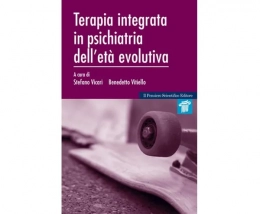Non ci sono recensioni
Edited by Ralph Buschbacher, MD, the Rehabilitation Medicine Quick Reference series is designed for the busy practitioner. The texts provide quick answers when diagnosing and treating common or more complex rehabilitation issues. All volumes in the series present the listed conditions in a read at-a-glance format with consistent headings for easy access to key information. Every entry is standardized for quick look-up in the office or clinic, and features description, etiology, risk factors, clinical features, natural history, diagnosis, red flags, treatment, prognosis, helpful hints, and suggested readings. All Rehabilitation Medicine Quick Referencetitles offer:
- Consistent Approach and Organization: at-a-glance outline format allows readers to find the facts quickly
- Concise Coverage: of must-know information broken down into easy-to-locate topics
- Fast Answers to Clinical Questions: diagnostic and management criteria for problems commonly encountered in daily practice
- Hands-on Practical Guidance: for all types of interventions and therapies
- Multi-Specialty Perspective: ensures that issues of relevance to all rehabilitation team members are addressed
Practitioners today see increasing numbers of brain injuries across the country and around the glozbe. The causes run the gamut of human endeavor, from frailty associated with aging, military activity, sports, and motor vehicle accidents of all kinds. With a growing awareness of the effects of traumatic brain injury (TBI) and the need for early intervention to ameliorate these effects and improve patient outcomes have come demand for practical information for clinicians on the "frontlines."
Designed for the busy practitioner Traumatic Brain Injury: Rehabilitation Medicine Quick Reference is a handy reference providing quick answers when diagnosing and treating traumatic brain injuries at every level. One hundred alphabetically listed topics are presented in a consistent two-page format for easy access to key information at a glance. The book covers assessment, diagnostic testing, and the full spectrum of brain injury conditions, sequelae, and interventions commonly associated with TBI and expected functional outcomes.
Specialized areas of TBI care are alos included for unique patient populations, such as sports or military injury, and conditions such as post-traumatic stress disorder or neuroendocrine disorder, that may be seen by providers in other settings.
Contents: Traumatic Brain Injury Basics: 1.Traumatic Brain Injury History; 2. Physical Examination; 3. Assessment Scales: Agitation; 4. Assessment Scales: Balance and Dizziness; 5. Assessment Scales: Cognition; 6. Assessment Scales: Concussion Grading; 7. Assessment Scales: Injury Severity Measures; 8. Assessment Scales: Level of Arousal, Attention and Cognition; 9. Assessment Scales: Orientation; 10. Assessment Scales: Post-concussive Symptom; 11. Assessment Scales: Sleep; 12. Assessment Scales: Smell; 13. Diagnostic Tests: Balance and Dizziness; 14. Diagnostic Tests: Bowel and Bladder Function; 15. Diagnostic Tests: Electrophysiologic Evoked Potentials; 16. Diagnostic Tests: Neuroimaging Findings in TBI; 17. Diagnostic Tests: Neuroimaging Techniques; 18. Diagnostic Tests: Swallowing; 19. Diagnostic Tests: Vascular; Conditions: 20. Agitation/Restless Behavior; 21. Akinetic Mutism; 22. Aphasia, Expressive (Motor); 23. Aphasia, Receptive (Sensory); 24. Attentional Deficits, Mild TBI; 25. Balance Deficits; 26. Bladder Issues; 27. Bowel Issues; 28. Central Dysautonomia; 29. Cognitive Deficits of TBI; 30. Combat-Related TBI; 31. Concussion, Cumulative Mild TBI; 32. Concussion, Mild TBI; 33. Concussion, Post-Concussive Symptoms/Syndrome (PCS)34. Concussion, Second Impact Syndrome; 35. Concussion, Sports; 36. Coordination Deficits; 37. Cranial Nerve Deficits I (Anosmia); 38. Cranial Nerve Deficits V, VII (Face); 39. Cranial Nerve Deficits X, XI, XII (Head and Neck); 40. Cranial Nerve Deficits III, I V, VI (Ocular movements); 41. Cranial Nerve Deficits II, VIII, IX (Special Senses); 42. Cranial/Skull Defects (Craniotomy/Craniectomy/Cranioplasty); 43. Deep Venous Thrombosis (DVT); 44. Dementia and TBI; 45. Depression; 46. Disinhibition; 47. Dizziness; 48. Dysarthria; 49. Dysphagia; 50. Emotional Lability; 51. Executive Function Impairment; 52. Gait (Ambulation) Dysfunction; 53. Geriatric TBI; 54. Hearing Deficits; 55. Hemiparesis/Hemiplegia; 56. Heterotopic Ossification (HO); 57. Hyperesthesia; 58. Hypoarousal; 59. Hypoesthesia/Numbness; 60. Hypotonia/Flaccidity; 61. Insomnia; 62. Locked-In Syndrome (LIS); 63. Minimally Conscious State (MCS); 64. Neglect (Unilateral Spatial Inattention); 65. Neuroendocrine Dysfunction: Other; 66. Neuroendocrine Dysfunction: Syndrome of Inappropriate Antidiuretic Hormone (SIADH); 67. Neurolinguistic Deficits of TBI; 68. Pain: Complex Regional Pain Syndrome; 69. Pain, General; 70. Pain: Headaches; 71. Pediatric TBI; 72. Penetrating Injuries; 73. Posttraumatic Amnesia; 74. Posttraumatic Hydrocephalus; 75. Posttraumatic Seizures (PTS); 76. Posttraumatic Stress Disorder; 77. Pressure Sores; 78. Quadriparesis; 79. SCI and TBI: Dual Disability; 80. Sexual Dysfunction; 81. Shaken Baby Syndrome; 82. Spasticity/Hypertonicity/Rigidity/Clonus; 83. Tinnitus; 84.Tremors; 85. Vegetative State Persistent (PVS); 86. Vision Deficits; 87. Visual Perceptual Deficits; Interventions: 88. Acute Management of Mild TBI; 89. Acute Management of Moderate-Severe TBI; 90. Agitation, Medications to Treat; 91. Complementary-Alternative Medicine; 92. Computer-based Cognitive Therapy; 93. Constraint-Induced Therapy; 94. Depression, Medication to Treat; 95. Disability Determination; 96. Intensity and Type of Therapy; 97. Outcome Assessment and Prediction; 98. Return to Sports; 99. Return to Work; 100. Spasticity, Oral Medications to Treat




